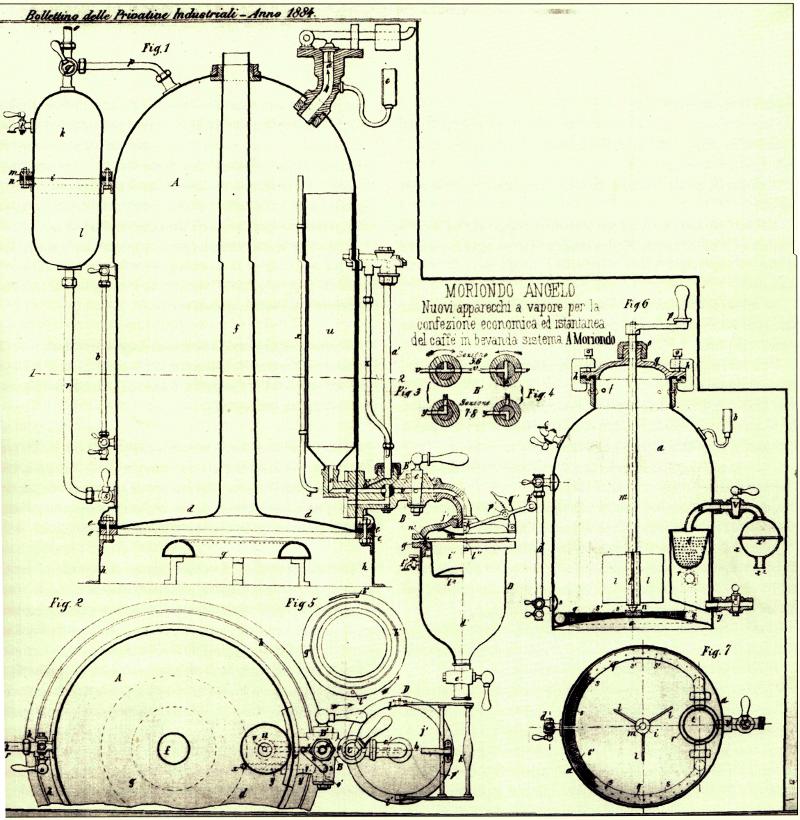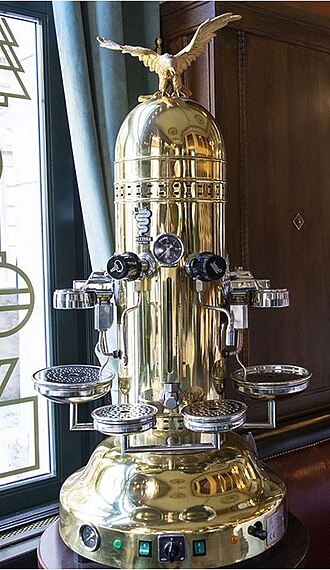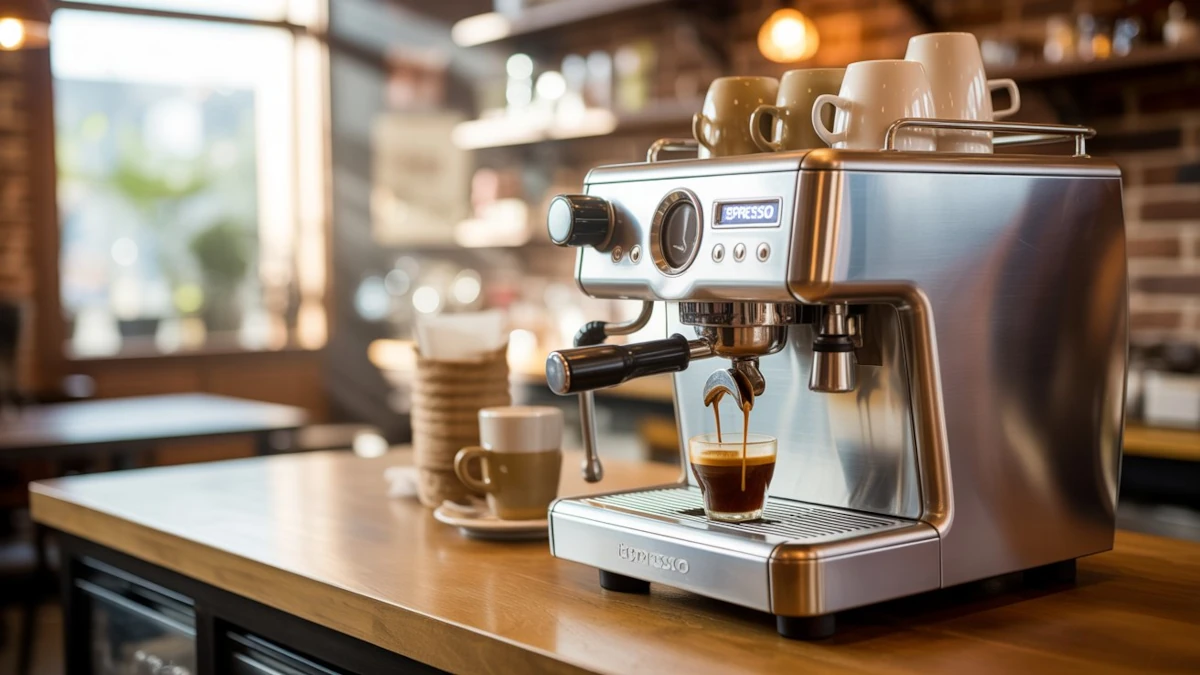To make coffee with an espresso machine, hot, pressurized water is forced through finely ground coffee beans, producing a rich, concentrated shot called espresso. This method creates the signature crema—a golden foam that crowns every perfect cup.
This article explores the journey of the espresso machine, from its steam-powered roots to the high-tech tools of today’s baristas. Along the way, you’ll discover how to use an espresso coffee machine and gain a deeper understanding of the artistry and precision behind every cup.
Whether you’re a home enthusiast or simply curious, this guide will equip you with both historical insight and practical tips for making coffee with an espresso machine.
Table of Contents
Origins of the Espresso Machine: A Revolution in Coffee Making
Why Steam Was the First Answer
In the late 1800s, brewing coffee was a slow process. Angelo Moriondo of Turin saw an opportunity to speed it up. In 1884, he patented a steam-powered bulk coffee brewer. Though it wasn’t built for individual cups, it laid the foundation for espresso’s future.

First patent (vol. 33 n. 256) for the Espresso Machine, by Mr. Angelo Moriondo, dated May 16, 1884 and titled “Nuovi apparecchi a vapore per la confezione economica ed istantanea del caffè in bevanda. Sistema A. Moriondo”
From Bulk to Single-Serve: Enter Luigi Bezzera
Luigi Bezzera revolutionized coffee preparation around 1901 by designing a machine capable of making single servings on demand. His machine introduced:
- The portafilter
- Multiple brew heads
- A temperature control system
In 1906, Desiderio Pavoni commercialized Bezzera’s design and introduced it to the public at the Milan Fair, coining the term “espresso”—meaning “pressed out.”

Bezzera Eagle 2 Coffee Maker, presented at Central Cafe Budapest
Game-Changing Innovation: The Lever and the Crema
Achille Gaggia and the Birth of Pressure-Driven Espresso
After World War II, Achille Gaggia changed espresso forever. He introduced the lever-operated espresso machine, which used a spring-piston system to create 8–10 bars of pressure—far greater than earlier steam machines.
This pressure extracted more flavor and produced something new: crema. This golden layer transformed espresso from a quick beverage into a crafted experience.
The Modern Era Begins: Faema E61 and Electric Precision
Ernesto Valente’s Faema E61 (1961)
Ernesto Valente brought automation and consistency to espresso brewing with the Faema E61, which introduced:
- An electric pump for stable 9-bar pressure
- A heat-exchange boiler for consistent brewing temperature
The E61’s design became the blueprint for both commercial and advanced home espresso machines, balancing control and efficiency.
Beyond the Machine: The Barista’s Role in the Perfect Shot
Why Machines Aren’t Enough
Even the best espresso coffee machine is only as good as its operator. A skilled barista fine-tunes several variables:
- Grind size
- Tamping pressure
- Water temperature
- Brew time
Mastering these elements turns mechanical brewing into sensory artistry.
Types of Espresso Machines: What You Need to Know
Espresso machines fall into three main categories:
Steam-Driven Machines
- Use steam pressure to push water through coffee
- Found in stovetop moka pots
- Inexpensive but limited in pressure and flavor control
Pump-Driven Machines
- Use electric pumps to maintain ~9 bar pressure
- Ideal for consistent, high-quality espresso
- Come in vibratory and rotary pump models
Manual / Lever Machines
- Use human or spring force to generate pressure
- Provide full control over extraction
- Favored by purists and coffee professionals
How an Espresso Machine Works (Pump-Driven Example)
Step-by-Step Inside the Machine
- Water reservoir: Supplies fresh water
- Pump: Pushes water into the boiler under high pressure
- Boiler: Heats water to ~90–96°C
- Group head & portafilter: Dispense water evenly through the coffee grounds
- Steam wand: Used to froth milk for drinks like lattes and cappuccinos
Understanding these components helps you appreciate how a machine espresso coffee setup delivers the perfect shot.
Precision, Maintenance & Daily Use Tips
Temperature & Pressure Control
Modern espresso machines use tech for better brewing:
- PID controllers: Maintain exact water temperature (~93°C)
- Vibratory pumps: Affordable, compact
- Rotary pumps: Quiet, more durable, better for high-volume use
Essential Cleaning Routines
Regular maintenance ensures better flavor and longer machine life:
- Daily:
- Clean portafilter and group head
- Purge and wipe steam wand
- Weekly:
- Clean grinder
- Backflush the machine with cleaning solution
Conclusion: From Steam Boilers to the Barista’s Touch
The espresso machine has come a long way—from Angelo Moriondo’s early steam brewers to the precision-engineered machines in cafés and kitchens today. Each breakthrough—from Bezzera’s portafilter to Gaggia’s crema-producing lever and Faema’s electric pump—has shaped how we make and enjoy coffee with espresso machines.
Yet, despite the tech, the soul of espresso lies with the barista. A perfect shot still depends on your hands, your senses, and your respect for the craft.
Whether you’re a novice or a pro, one thing remains clear: The pursuit of the perfect espresso is as much about passion as it is about pressure.
